LONDON – When tourists imagine London, they think of a vibrant city with a breath of diversity and culture through food, clothing and beliefs. Visitors also think about taking aesthetic pictures of buildings with historical context such as the Big Ben, the British Museum and The Tower of London, but there is one thing that all tourists know about London: the transport system with the iconic double decker red bus.
Listen to the author read this story:
The TfL, or the Transport for London, is a government body which has provided transport services throughout London since 1933. It is responsible for operating multiple rail networks such as the London Underground, London Overground and Docklands Light Railway, as well as taxis, buses, trams, cycling provision, principal road routes and river services.
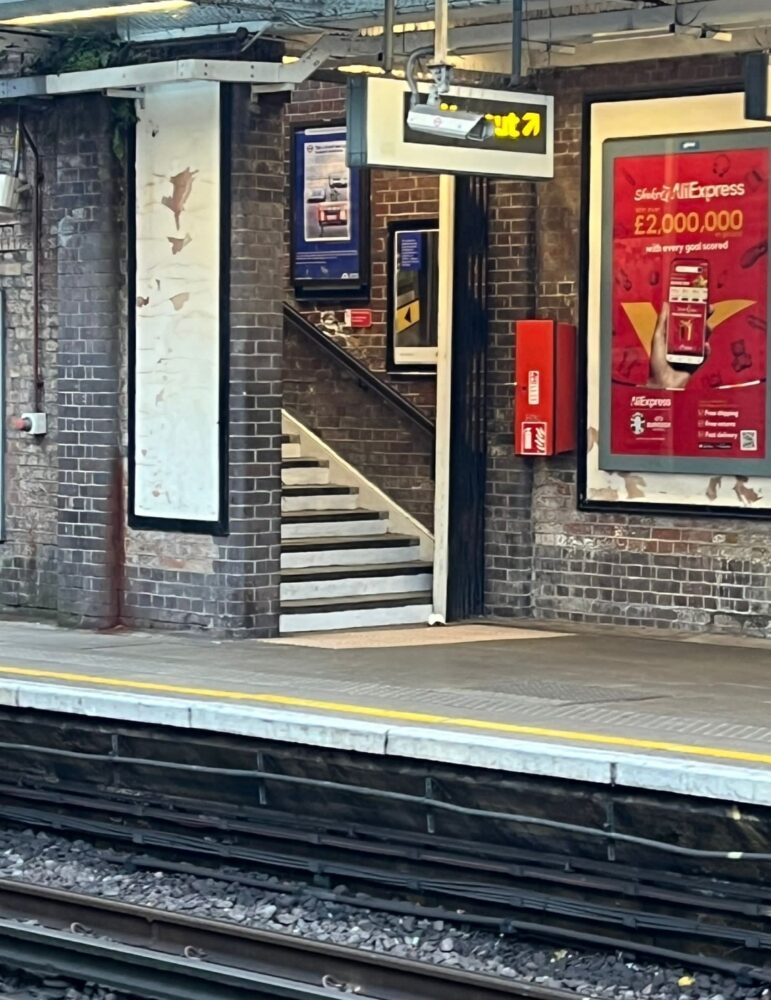 The Kingsbury station. (Dezlene Akua Erza-Essien/YJI)
The Kingsbury station. (Dezlene Akua Erza-Essien/YJI)
But for the everyday Londoner, the TfL has been a mix of emotions with its expensive prices but efficient service, at least on the one day of the week when there is not a strike.
Since March, TfL prices have gone up by 4.6% which spurred opinions and questions regarding TfL’s effectiveness.
Many Londoners have seen throughout the years how much the TfL has benefited their daily life.
John Mackerel, 75, is retired and has been using the TfL throughout the years. He said the London transport has improved a lot over the years, with most of the buses coming on time. He said the trains could use a bit more improvement, though, as they can be quite late and sometimes dirty with the central line being the dirtiest.
The TfL improved when it came to issues regarding crime, Mackerel said, recalling people getting robbed on the train in the 1980s, though this issue is not as prevalent today.
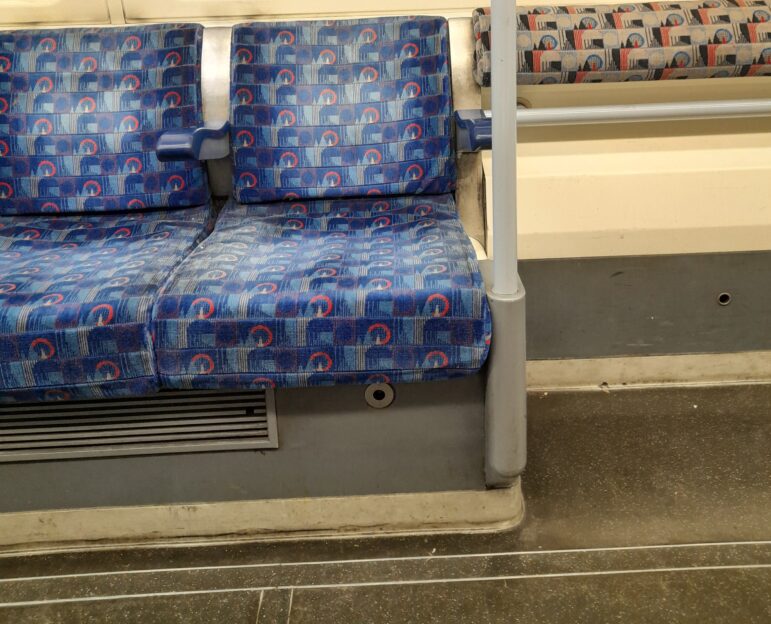
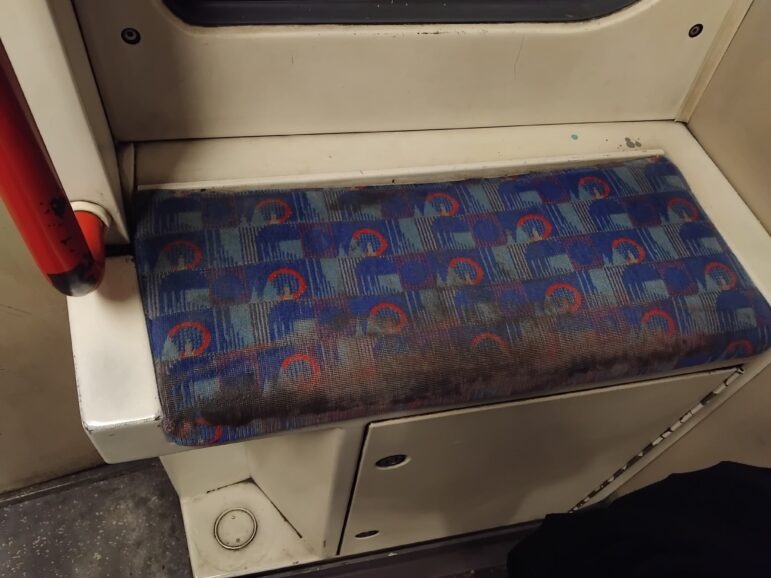
Above, images of worn seats. At left is the Jubilee Line and at right, the Central Line. (Dezlene Akua Erza-Essien/YJI)
Another advantage of the TfL is that it is quick and easy to commute from zone 1 to zone 9 through the London underground in around an hour. For example, taking the metropolitan line from Aldgate to Amersham takes around 1 hour, whereas taking a car would take over 1 hour and 30 minutes.
Public transport is also environmentally friendly compared to other means of transport, such as cars. The carbon footprint per kilometer is 79g for London buses and 28g for the London Underground. That’s better than an average bus, which is 97g. A diesel or petrol powered car is around 170g according to the UK government’s Department for Energy Security and Net Zero 2022 figures.
Some have quite a negative experience with TfL, believing that it has dirty conditions, delays and a lack of buses in certain areas.
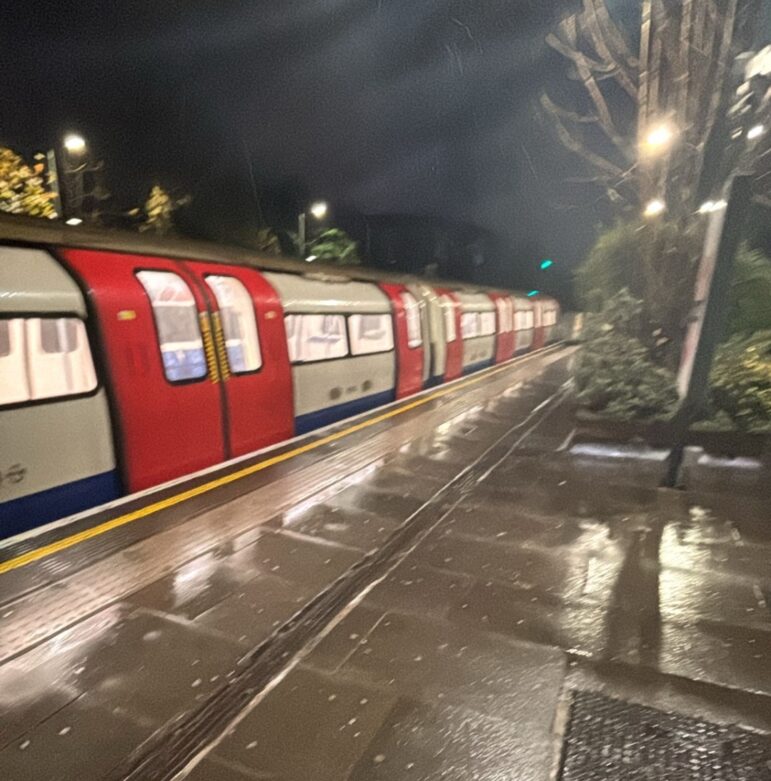 A train at the Willesden Green station. (Dezlene Akua Erza-Essien/YJI)
A train at the Willesden Green station. (Dezlene Akua Erza-Essien/YJI)
Oskar Zgymunt, a 17-year-old student from St Dominic’s Sixth form College explained.
“Buses are never clean to the extent that I do not even expect them to be; be that old takeaway on the floor or cigarette burns on seats and windows, to the point where school children find it amusing to slap the seats to make all of the accumulated dirt rise off the seats because of how rarely seats are given an actual wash,” Zgymunt said. “The monitors are reliable for the most part, but announcements like bus stops being closed are frequently left until too late, and are often unintelligible.”
Zgymunt, who said bus times are “never accurate,” addressed the effectiveness of public transport.
“I feel like it isn’t efficient because of how often buses randomly don’t show up,” Zgymunt said. “They are frequently so full that they cannot let anyone on, and change the terminating stop halfway through the journey for no apparent reason.”
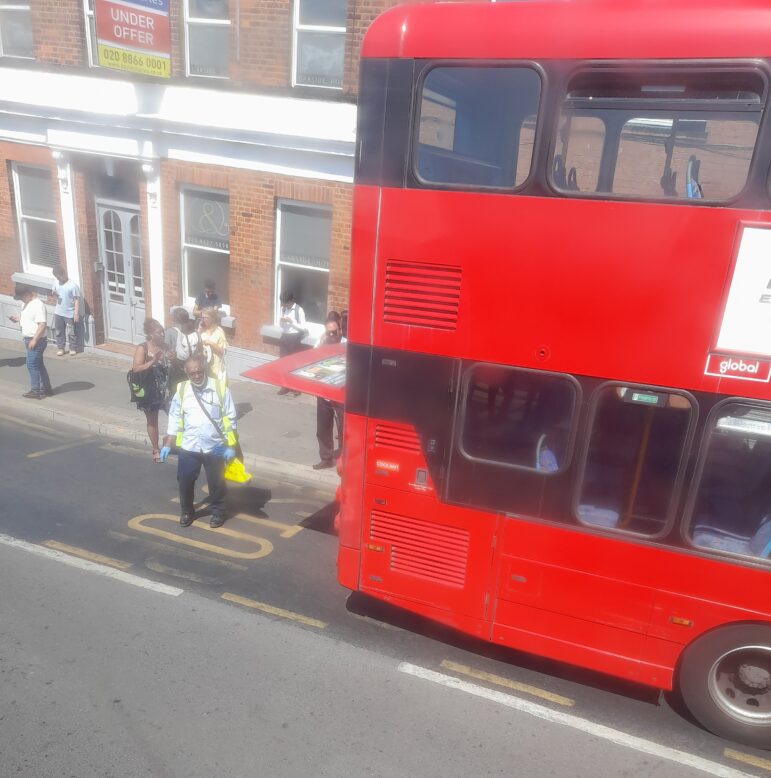 A double decker bus breakdown at the Harrow and Wealdstone station. (Dezlene Akua Erza-Essien/YJI)
A double decker bus breakdown at the Harrow and Wealdstone station. (Dezlene Akua Erza-Essien/YJI)
With the price increase, riders describe many things the TfL can do to improve. Instead of eliminating bus lines – which upsets riders – there could be more buses in certain areas, such as south and North London. Adding more rules about littering on transport could also have a positive impact, some riders said.
Some newer, cleaner buses and trains have already been introduced in some parts of London, which could entice riders.
The TfL offers various ways for people to commute, but with this year’s increase to an already expensive fare, riders may expect further improvement on the transport system in Greater London.
Dezlene Akua Erza-Essien is a Reporter with Youth Journalism International.